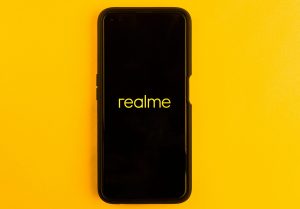Personalized Insurance: Pay-As-You-Live Policies via IoT Devices
The world of insurance is rapidly evolving, thanks to the advancements in technology. The traditional one-size-fits-all insurance policies are gradually becoming a thing of the past as more and more people turn to personalized insurance options. Personalized insurance, in its simplest form, is the tailoring of insurance policies to meet the specific needs and lifestyle of the individual. With the introduction of IoT (Internet of Things) devices, the insurance industry is taking a giant leap into the future by offering pay-as-you-live policies. In this article, we will explore the concept of personalized insurance and how IoT devices are transforming the insurance landscape with pay-as-you-live policies.
What is Personalized Insurance?
Personalized insurance, also known as usage-based insurance, is a type of insurance where the premium rates are based on the actual usage of the insured item. Unlike traditional insurance policies that use general criteria to determine premiums, personalized insurance takes into account individual characteristics and lifestyle to tailor policies to the specific needs of the insured.
For instance, with car insurance, a traditional policy will take into account factors such as the make and model of the car, age and driving history of the owner, and location to calculate the premium. On the other hand, personalized insurance relies on real-time data collected through IoT devices to determine the premium rates. This data provides a more accurate and fair representation of the risk associated with insuring the vehicle.
How IoT Devices are Revolutionizing Insurance
Real-Time Data Tracking
IoT devices such as telematics, wearables, and smart home sensors collect data in real-time, providing insurers with detailed insights into the activities and behavior of the insured. For example, a telematics device installed in a car can track the driving habits of the owner, such as speed, braking, and location. This data enables insurers to accurately assess the risk associated with insuring the vehicle and adjust the premiums accordingly.
Precise Risk Assessment
The traditional method of risk assessment relies on general criteria and historical data, which may not accurately reflect the current situation. With IoT devices, insurers can collect real-time data and use advanced analytics to generate more precise risk assessments. This approach not only benefits the insurance companies but also rewards responsible and low-risk individuals with lower premiums.
Flexible and Fair Policies
IoT devices enable insurers to offer more flexible and fair policies to their clients. With the ability to track actual usage, personalized insurance allows for transparent pricing, where the premiums are based on the data collected from the IoT devices. This eliminates the guesswork and hidden costs associated with traditional insurance policies, giving individuals more control over their insurance coverage and costs.
Introducing Pay-As-You-Live Policies
One of the most significant benefits of personalized insurance via IoT devices is the introduction of pay-as-you-live policies. This approach means that individuals only pay for the insurance they use. For example, with car insurance, premiums will vary based on factors such as distance, time of day, and driving style. Drivers who use their cars less frequently and follow safe driving habits will pay lower premiums compared to those who drive long distances and engage in risky driving behaviors.
Pay-as-you-live policies not only provide fair pricing but also promote responsible and safe behavior. With the constant monitoring of IoT devices, individuals are incentivized to drive responsibly to maintain low premiums, eventually leading to fewer accidents and safer roads.
The Future of Personalized Insurance
IoT devices have already made a significant impact on the insurance industry, with many companies offering personalized insurance options. However, this is just the beginning. As technology continues to advance, we can expect to see more innovative uses of IoT devices in the insurance sector.
In the future, we may see insurance policies that track health and wellness, using data collected from wearables and smart devices to offer personalized health insurance. Similarly, home insurance policies may also incorporate IoT devices to monitor and prevent potential risks, such as fire and theft.
Conclusion
Personalized insurance through IoT devices offers a win-win situation for both the insurance companies and the individual. With real-time data tracking, precise risk assessment, and fair and flexible policies, personalized insurance is empowering individuals to have more control over their insurance coverage and costs. Pay-as-you-live policies are the way forward, promoting responsible behavior and making insurance more accessible and affordable for everyone. The future of insurance looks brighter with the integration of IoT devices, and it is an exciting time to be a part of this evolving industry.











